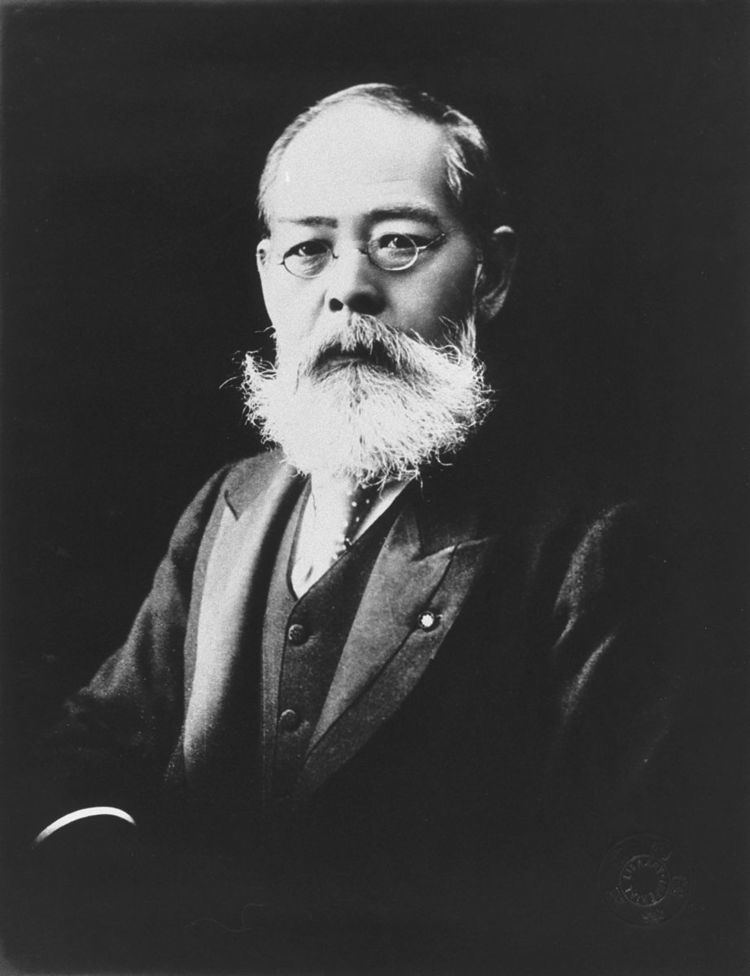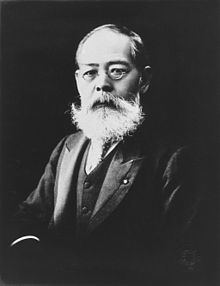Nationality Japanese | Name Aoki Shuzo | |
 | ||
Occupation Diplomat, Foreign Minister of Japan | ||
Urotas unit aoki sh z nasushiobara
Aoki Shūzō (青木 周藏, March 3, 1844 – February 16, 1914) was a diplomat and Foreign Minister in Meiji period Japan.
Contents
Biography

Viscount Aoki was born to a samurai family as son of the Chōshū domain's physician in what is now part of Sanyō Onoda in Yamaguchi Prefecture). He studied western science and medicine (rangaku) at the domain school Meirinkan in Hagi, and in Nagasaki, He was then sent by Chōshū domain to Germany to study western law in 1868. However, while in Germany, his studies ranged over a very wide area, from western medicine, to politics, military science, and economics. From his surviving notes, he studied how to make beer, paper and paper money, carpets and rugs and techniques of western forestry management.
Aoki returned to Japan after the Meiji Restoration, and entered the Foreign Ministry of new Meiji government in 1873 as First Secretary to the Japanese legations to Germany, Netherlands and Austria. He then served as Vice Foreign Minister in the first Itō administration and Foreign Minister in the first Yamagata administration. While Foreign Minister, he strove for the revision the unequal treaties between the Empire of Japan and the various European powers, particularly the extraterritoriality clauses, and expressed concern over the eastern expansion of the Russian Empire into east Asia.
Aoki commissioned in 1888 an architect and friend from Berlin times, Matsugasaki Tsumunaga, to build him a villa as resort in Nasu highlands. This villa was costly restored in recent years and entered the list of Important Cultural Properties of Japan. Matsugasaki won Aoki as first president of the newly established Society of Japanese Architects in 1888.
Aoki was forced to resign as a consequence of the Ōtsu Incident of 1891, but resumed his post as Foreign Minister under the Matsukata administration.
In 1894, as ambassador to Great Britain, Aoki worked with Foreign Minister Mutsu Munemitsu towards the revision of the unequal treaties, successfully concluding the Anglo-Japanese Treaty of Commerce and Navigation for Japan in London on July 16, 1894.
Returned to his post as Foreign Minister under the second Yamagata administration, Aoki helped Japan gain recognition as one of the Great Powers by its military support of the European forces during the Boxer Rebellion.
Aoki was then appointed to the Privy Council and elevated in title to shishaku (viscount).
In 1906, he served as ambassador to the United States.
Aoki died at his country house in Nasu, Tochigi prefecture in 1914.
Family
Aoki married the daughter of a German aristocrat, Elisabeth von Rhade, and they had among others a daughter named Hanna Aoki (Tokyo, December 16, 1879 – Wissen, June 24, 1953), who married at Tokyo on December 19, 1904 Alexander Maria Hermann Melchior, Graf von Hatzfeldt zu Trachenberg (Berlin, [February 10, 1877 – Schloss Schönstein, November 27, 1953) and had an only daughter Hissa Elisabeth Natalie Olga Ilsa Gräfin von Hatzfeldt zu Trachenberg (Pommerswitz, February 26, 1906 – Salzburg, June 4, 1985), who married at Munich, April 28, 1927 Maria Erwin Joseph Sidonius Benediktus Franziskus von Sales Petrus Friedrich Ignatius Hubertus Johannes von Nepomuk Felix Maurus Graf von Neipperg (Schwaigern, January 15, 1897 – Stuttgart-Vaihingen, December 5, 1957), and had issue now extinct in male line.
Morihisa Aoki, Japanese ambassador to Peru during the Japanese embassy hostage crisis was his great grandson.
